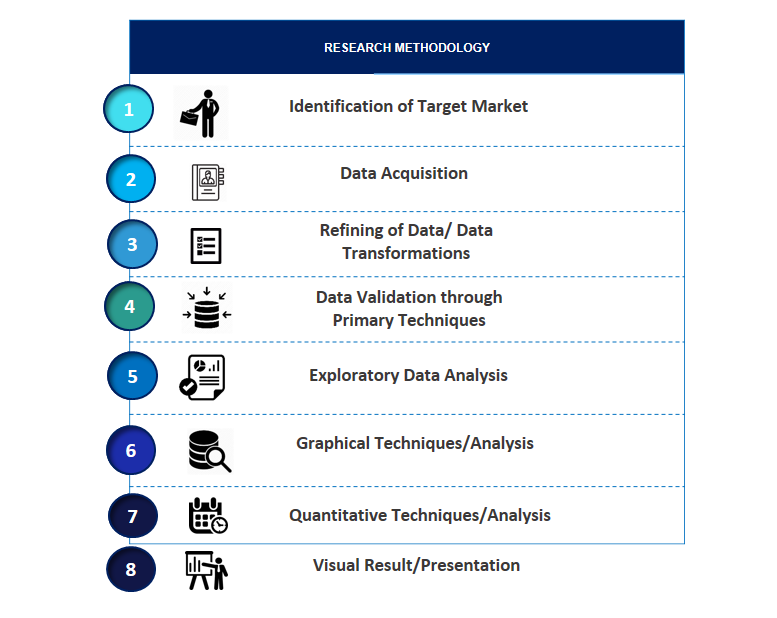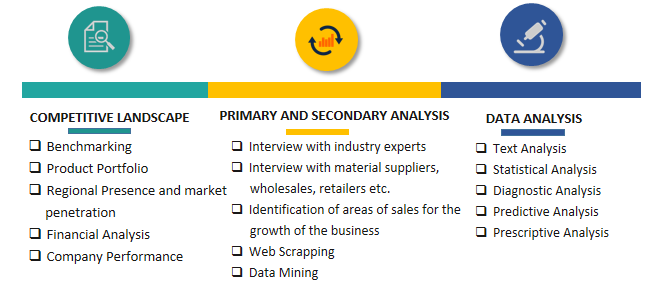Turkey Commercial Real Estate Market Introduction and Overview
According to SPER Market Research, the Turkey Commercial Real Estate Market is estimated to reach USD 87.13 billion by 2033 with a CAGR of 26.71%.
The report includes an in-depth analysis of the Turkey Commercial Real Estate Market, encompassing product mix, applications, supplier analysis, market size and trends. Properties used for business purposes, such as office buildings, retail stores, industrial facilities, and hotels, are referred to as commercial real estate. These assets are intended to bring in money via capital growth, rental income, or commercial operations. Commercial real estate provides the physical framework for trade, industry, and commerce, in contrast to residential real estate, which is primarily used for personal use. It includes a wide variety of property kinds, each serving certain commercial requirements. Commercial real estate is an essential part of the larger real estate market and economic environment since it may yield large profits and appreciate in value over time.
- October 2021; In order to jointly create a new greenfield port in Ceyhan, Adana, Turkey, and provide handling and storage services to the Ceyhan Petrochemical Industrial Zone—which is being developed by Rönesans Holding Stolthaven Terminals and Rönesans Holding have entered into a collaboration agreement.
- July 2021; The construction of two new state-of-the-art gas turbines and the reconstruction of the power plant for the Oil Refinery Complex in Turkmenbashi are the subjects of a contract between the Turkish government and Calık Holding. The project will be delivered fully operational within 18 months, as per the contract.
Market Opportunities and Challenges
Opportunities- Given Turkey's advantageous position, expanding economy, and rising urbanization, the country's commercial real estate sector has a wealth of prospects. Istanbul is a major business hub that draws a lot of domestic and international investment in its retail stores, industrial facilities, and office buildings. New airports, bridges, and transit networks are examples of government-funded infrastructure improvements that improve accessibility and increase demand for commercial real estate. The expansion of the tourism industry also helps the market for hospitality real estate. A favorable climate for real estate development is further created by economic reforms and investment-friendly laws, which makes Turkey a desirable location for investors looking for high returns and long-term growth potential.
Challenges- Numerous reasons impede the expansion of the commercial real estate sector in Turkey. Property values and investor confidence can fluctuate as a result of political and economic turmoil. Currency fluctuations and high rates of inflation drive up expenses and make financial planning more difficult. Bureaucratic roadblocks and regulatory obstacles can cause delays in projects and discourage international investment. Economic cycles also make the market vulnerable to changes in demand, which can affect rental yields and occupancy rates. Development operations are further limited by high borrowing costs and limited access to financing. Challenges include the requirement for sustainable practices and environmental concerns, which call for large investments and compliance efforts.
Market Competitive Landscape
The Turkey Commercial Real Estate Market is a highly competitive arena due to the presence of multiple global and regional companies in the competitive environment. Leading companies in the industry are Ağaoğlu Group, Akfen Holding, Artaş Group, Calik Holding, Doğuş Group, Ege Yapı, Emaar Turkey, Kiler GYO, Nurol GYO, and Rönesans Holding, Others.
Scope of the Report:
| Report Metric | Details |
| Market size available for years | 2020-2033 |
| Base year considered | 2023 |
| Forecast period | 2024-2033 |
| Segments covered | By Property Type, By Business.
|
| Regions covered | Aegen, Black Sea, Central Anatolia, Eastern Anatolia, South-Eastern Anatolia, Marmara, Mediterranean.
|
| Companies Covered | Ağaoğlu Group, Akfen Holding, Artaş Group, Calik Holding, Doğuş Group, Ege Yapı, Emaar Turkey, Kiler GYO, Nurol GYO, and Rönesans Holding, Others. |
COVID-19 Impact on Turkey Commercial Real Estate Market
The Turkish commercial real estate sector has been significantly impacted by the Covid-19 epidemic. The implementation of containment measures, such as travel restrictions and lockdowns, caused disruptions to construction activities and caused delays to project timelines. There was a notable decline in foot traffic and occupancy rates in the retail and hospitality industries. However, the market is anticipated to gradually rebound due to pent-up demand and the resumption of economic operations as vaccination efforts advance and travel restrictions loosen.
Key Target Audience:
- Real Estate Investors
- Property Developers
- Retail Chains
- Government Agencies
- Property Management Firms
Our in-depth analysis of the Turkey Commercial Real Estate Market includes the following segments:
|
By Property Type:
|
Residential Buildings
Commercial Complexes
Industrial Infrastructure
Government Buildings
|
|
By Business:
|
Sales
Rental
Lease
|
Key Topics Covered in the Report:
- Turkey Commercial Real Estate Market Size (FY’2024-FY’2033)
- Overview of Turkey Commercial Real Estate Market
- Segmentation of Turkey Commercial Real Estate Market by Property Type (Residential Buildings, Commercial Complexes, Industrial Infrastructure, Government Buildings)
- Segmentation of Turkey Commercial Real Estate Market by Business ( Sales, Rental, Lease)
- Statistical Snap of Turkey Commercial Real Estate Market
- Expansion Analysis of Turkey Commercial Real Estate Market
- Problems and Obstacles in Turkey Commercial Real Estate Market
- Competitive Landscape in the Turkey Commercial Real Estate Market
- Impact of COVID-19 and Demonetization on Turkey Commercial Real Estate Market
- Details on Current Investment in Turkey Commercial Real Estate Market
- Competitive Analysis of Turkey Commercial Real Estate Market
- Prominent Players in the Turkey Commercial Real Estate Market
- SWOT Analysis of Turkey Commercial Real Estate Market
- Turkey Commercial Real Estate Market Future Outlook and Projections (FY’2024-FY’2033)
- Recommendations from Analyst
1. Introduction
1.1. Scope of the report
1.2. Market segment analysis
2. Research Methodology
2.1. Research data source
2.1.1. Secondary Data
2.1.2. Primary Data
2.1.3. SPER’s internal database
2.1.4. Premium insight from KOL’s
2.2. Market size estimation
2.2.1. Top-down and Bottom-up approach
2.3. Data triangulation
3. Executive Summary
4. Market Dynamics
4.1. Driver, Restraint, Opportunity and Challenges analysis
4.1.1. Drivers
4.1.2. Restraints
4.1.3. Opportunities
4.1.4. Challenges
4.2. COVID-19 Impacts of the Turkey Commercial Real Estate Market.
5. Market variable and outlook
5.1. SWOT Analysis
5.1.1. Strengths
5.1.2. Weaknesses
5.1.3. Opportunities
5.1.4. Threats
5.2. PESTEL Analysis
5.2.1. Political Landscape
5.2.2. Economic Landscape
5.2.3. Social Landscape
5.2.4. Technological Landscape
5.2.5. Environmental Landscape
5.2.6. Legal Landscape
5.3. PORTER’s Five Forces
5.3.1. Bargaining power of suppliers
5.3.2. Bargaining power of buyers
5.3.3. Threat of Substitute
5.3.4. Threat of new entrant
5.3.5. Competitive rivalry
5.4. Heat Map Analysis
6. Competitive Landscape
6.1. Turkey Commercial Real Estate Market Manufacturing Base Distribution, Sales Area, Product Type
6.2. Mergers & Acquisitions, Partnerships, Product Launch, and Collaboration in Turkey Commercial Real Estate Market
7. Turkey Commercial Real Estate Market, By Property Type (USD Million) 2020-2033
7.1. Turkey Commercial Real Estate Market Size, Share and Forecast, By Property Type, 2020-2026
7.2. Turkey Commercial Real Estate Market Size, Share and Forecast, By Property Type, 2027-2033
7.3. Residential Buildings
7.4. Commercial Complexes
7.5. Industrial Infrastructure
7.6. Government Buildings
8. Turkey Commercial Real Estate Market, By Business (USD Million) 2020-2033
8.1. Turkey Commercial Real Estate Market Size, Share and Forecast, By Business, 2020-2026
8.2. Turkey Commercial Real Estate Market Size, Share and Forecast, By Business, 2027-2033
8.3. Sales
8.4. Rental
8.5. Lease
9. Turkey Commercial Real Estate Market Forecast, 2020-2033 (USD Million)
9.1. Turkey Commercial Real Estate Market Size and Market Share
10. Turkey Commercial Real Estate Market, By Region, 2020-2033 (USD Million)
10.1. Turkey Commercial Real Estate Market Size and Market Share By Region (2020-2026)
10.2. Turkey Commercial Real Estate Market Size and Market Share By Region (2027-2033)
10.3. Aegen
10.4. Black Sea
10.5. Central Anatolia
10.6. Eastern Anatolia
10.7. South-Eastern Anatolia
10.8. Marmara
10.9. Mediterranean
11. Company Profile
11.1. AGAOGLU GROUP
11.1.1. Company details
11.1.2. Financial outlook
11.1.3. Product summary
11.1.4. Recent developments
11.2. AKFEN HOLDING
11.2.1. Company details
11.2.2. Financial outlook
11.2.3. Product summary
11.2.4. Recent developments
11.3. ARTAS GROUP
11.3.1. Company details
11.3.2. Financial outlook
11.3.3. Product summary
11.3.4. Recent developments
11.4. CALIK HOLDING
11.4.1. Company details
11.4.2. Financial outlook
11.4.3. Product summary
11.4.4. Recent developments
11.5. DOGUS GROUP
11.5.1. Company details
11.5.2. Financial outlook
11.5.3. Product summary
11.5.4. Recent developments
11.6. EMAAR TURKEY
11.6.1. Company details
11.6.2. Financial outlook
11.6.3. Product summary
11.6.4. Recent developments
11.7. KILER GYO
11.7.1. Company details
11.7.2. Financial outlook
11.7.3. Product summary
11.7.4. Recent developments
11.8. NUROL GYO
11.8.1. Company details
11.8.2. Financial outlook
11.8.3. Product summary
11.8.4. Recent developments
11.9. RONESANS HOLDING
11.9.1. Company details
11.9.2. Financial outlook
11.9.3. Product summary
11.9.4. Recent developments
11.10. Others
12. Conclusion
13. List of Abbreviations
14. Reference Links
SPER Market Research’s methodology uses great emphasis on primary research to ensure that the market intelligence insights are up to date, reliable and accurate. Primary interviews are done with players involved in each phase of a supply chain to analyze the market forecasting. The secondary research method is used to help you fully understand how the future markets and the spending patterns look likes.
The report is based on in-depth qualitative and quantitative analysis of the Product Market. The quantitative analysis involves the application of various projection and sampling techniques. The qualitative analysis involves primary interviews, surveys, and vendor briefings. The data gathered as a result of these processes are validated through experts opinion. Our research methodology entails an ideal mixture of primary and secondary initiatives.


